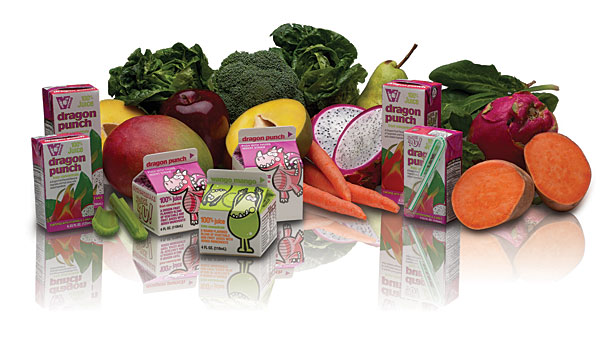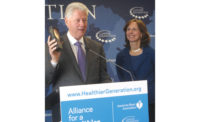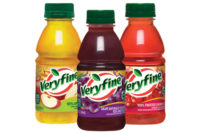Following up on last year’s new standards for school meals, the U.S. Department of Agriculture (USDA) unveiled its new “Smart Snacks in School” nutrition standards that will affect food and beverages sold in vending machines and a la carte.
“Nothing is more important than the health and well-being of our children,” said Agriculture Secretary Tom Vilsack in a statement. “Parents and schools work hard to give our youngsters the opportunity to grow up healthy and strong, and providing healthy options throughout school cafeterias, vending machines and snack bars will support their great efforts.”
A provision of the Healthy, Hunger-Free Kids Act of 2010 to establish nutrition standards for all food and beverages sold in schools beyond the federally supported meal programs, the interim final rule reflects the USDA’s consideration and responses to comments it received on the proposal earlier this year, it stated.
In a release, the USDA said the standards were a balance of science-based nutrition guidelines with practical and flexible solutions to promote healthier eating on campus and drew from recommendations from the Institute of Medicine and existing voluntary standards already implemented by thousands of U.S. schools.
Under the beverage requirements, the USDA offered varied standards for elementary, middle and high schools. The following are highlights of those standards:
Elementary school: Plain water (sparkling or still) is available without an ounce restriction, while all other beverages have an 8-ounce limit. Other approved beverages include low-fat, unflavored milk; nonfat milk including flavored varieties; nutritionally equivalent milk alternatives as permitted by school meal requirements; 100 percent fruit or vegetable juices; and full-strength fruit or vegetable juices that are diluted with still or sparkling water.
Middle school: Beverage options are identical to elementary school standards; however, the ounce restriction is increased to 12 ounces for all categories except water, which is unlimited.
High school: Beverage options are identical to elementary and middle school standards; however, calorie-free flavored and/or sparkling water and other calorie-free beverages that meet the U.S. Food and Drug Administration’s requirement of fewer than 5 calories for each 8-ounce serving or 10 or fewer calories for each 20-ounce serving (the maximum serving size) also are allowed. In addition, beverages with up to 40 calories in each 8-ounce serving or 60 calories in each 12-ounce serving (the maximum serving size) are permissible. Unflavored water does not have a serving size restriction.
The new standards also state that beverages in elementary and middle schools must be caffeine free with the exception of naturally occurring trace amounts. Caffeine-containing beverages are permitted in high schools.
The USDA’s new standards show similarities to the School Beverage Guidelines, an initiative organized by the American Beverage Association (ABA) and the Alliance for a Healthier Generation, a joint venture of the American Heart Association and the William J. Clinton Foundation, to remove full-calorie soft drinks from schools across the country and replace them with lower-calorie, smaller-portioned beverages. The commitment from America’s leading beverage companies was completed in 2010.
“We’re very pleased with the proposed rule because it looked a lot like the School Beverage Guidelines, and we just think that’s highly unusual that something that the government would ultimately codify draws from a voluntary industry initiative, but because it’s a rigorous initiative, a common sense initiative, and it’s been so positively received by parents and communities and school leaders out there, it’s one last chapter of the School Beverage Guidelines,” ABA President and Chief Executive Officer Susan Neely said in Beverage Industry’s July issue.
The School Nutrition Association (SNA) is reviewing the details of the interim rule to assess the impact of these new regulations on school meal programs and is reconvening a task force it assembled to develop comments in response to the proposed rule, says Diane Pratt-Heavner, director of media relations for SNA.
But many beverage manufacturers have already prepared for these changes. In 2012, Akron, Ohio-based Country Pure Foods introduced V Blend Vegetable/Fruit Blend juices to help children get a full serving of vegetables. Following its successful launch, the company will release a new flavor: Cherry Star.
Along with the new flavor, Country Pure Foods will release a variety of new sizes, including 4.23-ounce and 6.75-ounce aseptic juice boxes of its Dragon Punch flavor, a 4.23-ounce aseptic juice box of its Wango Mango flavor, and a 4-ounce cup size of its Wango Mango and Dragon Punch varieties.
“We had a very successful year with the launch of the V Blend line,” said Raymond Lee, president and chief executive officer of Country Pure Foods, in a statement. “That is one of the main reasons we are coming out with these different size, packaging and flavor options. This product was primarily developed to be used as a tool to make it easier for school nutrition planners to meet vegetable requirements. This new line has not only made things easier for industry workers, but it has also increased the total vegetable servings consumed by children, which is a rising concern among industry officials and parents alike.”



